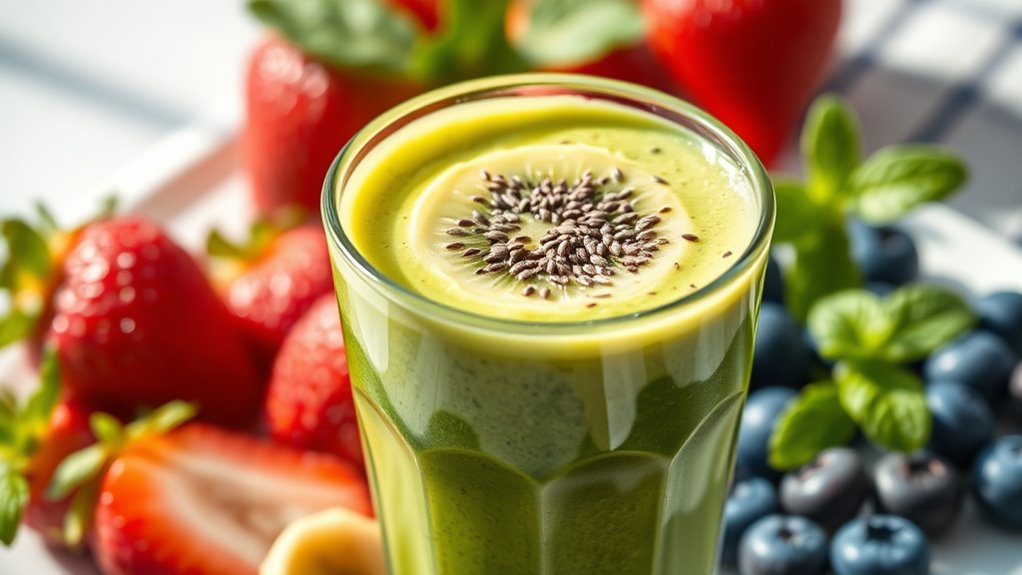You can make low calorie smoothies by blending 1 cup of fresh fruits with 1 cup of leafy greens and ½ cup low-fat yogurt for protein and creaminess. Use water or unsweetened almond milk as your liquid base to keep calories down, and pre-freeze fruits for a thicker texture. Start by adding liquids to the blender, then fruits and greens, blend until smooth but not overdone. Keep portions balanced for great taste and nutrition. Discover simple ways to customize and serve these healthy treats.
Ingredients and Quantity
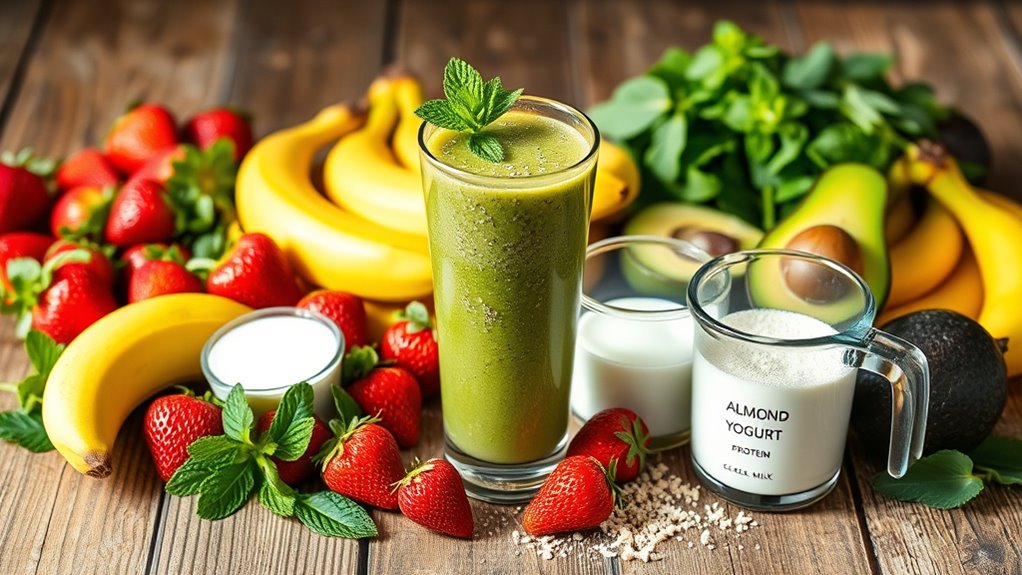
Although the specific ingredients can vary, low-calorie smoothies typically include a balance of fresh or frozen fruits, leafy greens, and a liquid base like water, almond milk, or unsweetened yogurt. You’ll want to focus on healthy fruits and low fat yogurt to keep calories down while maximizing nutrients. Here’s a clear guide to common ingredient quantities for a single serving:
| Ingredient | Quantity | Purpose |
|---|---|---|
| Healthy Fruits | 1 cup (150g) | Natural sweetness & fiber |
| Leafy Greens | 1 cup (30g) | Vitamins & antioxidants |
| Low Fat Yogurt | 1/2 cup (120ml) | Protein & creaminess |
| Liquid Base | 1/2 cup (120ml) | Smooth texture |
| Optional Extras | 1 tbsp | Flavor or nutrients |
This balance lets you enjoy freedom in flavor while staying on track with calories.
Preparations
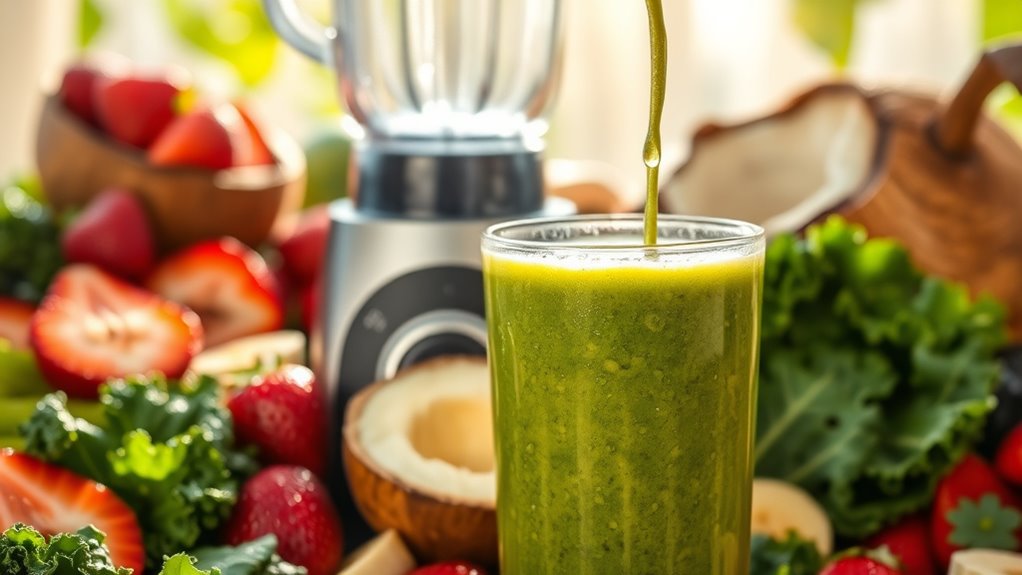
Preparing a low-calorie smoothie starts with selecting fresh, high-quality ingredients and properly measuring them according to your recipe. This foundation guarantees your smoothie variations deliver maximum flavor and nutrition without excess calories. Attention to detail during preparation boosts the effectiveness of your blending techniques, resulting in a smoother texture and balanced taste.
Start with fresh, quality ingredients and precise measurements for flavorful, nutritious, low-calorie smoothies.
Before blending, consider these key preparation steps:
- Wash and chop fruits and vegetables evenly for consistent blending
- Portion ingredients to control calorie intake precisely
- Choose liquid bases like water or unsweetened almond milk to reduce calories
- Pre-freeze fruit for a thicker, chilled smoothie without added ice
How to Prepare
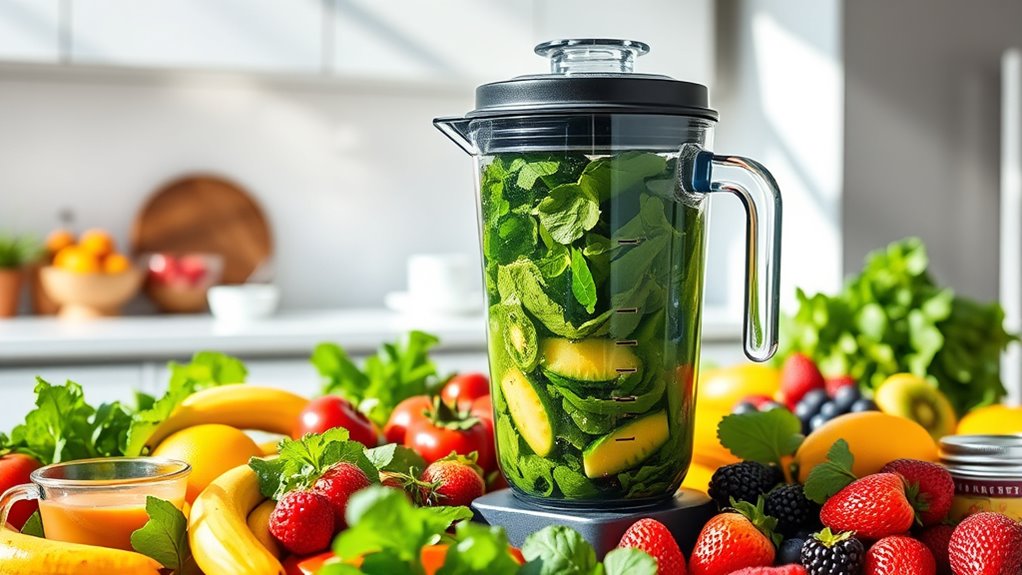
- Select and measure your ingredients carefully.
- Add liquids first (water, unsweetened almond milk, or green tea) to the blender to create a smooth base and prevent clumping.
- Add fruits, vegetables, and any supplements or protein powders.
- Pulse the blender initially to break down tougher ingredients.
- Blend on high until smooth.
- Experiment with ingredient ratios or add ice cubes for texture.
- Avoid over-blending to preserve nutrients and prevent heat buildup that can degrade vitamins.
- Enjoy a revitalizing, nutrient-rich smoothie that supports healthy and creative eating.
How to Serve
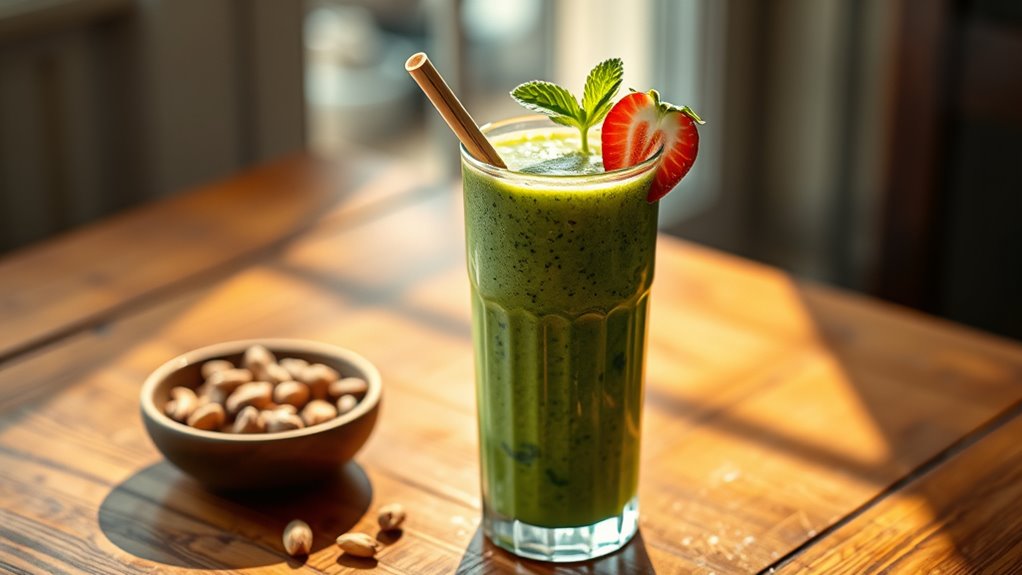
When serving your low-calorie smoothie, choosing the right glassware can enhance both the presentation and your enjoyment. Presentation ideas that align with your lifestyle can make the experience more satisfying. Consider these serving suggestions to elevate your smoothie:
- Use tall, clear glasses to showcase vibrant colors and textures.
- Add a reusable straw for eco-friendly convenience and style.
- Garnish with a fresh fruit slice or a sprig of mint to boost visual appeal.
- Serve chilled with a small side of mixed nuts or seeds for added crunch.
These simple yet effective presentation ideas not only improve aesthetics but also encourage mindful consumption. By tailoring how you serve your smoothie, you embrace freedom in your daily routine while maintaining a healthy, low-calorie diet.
Tips
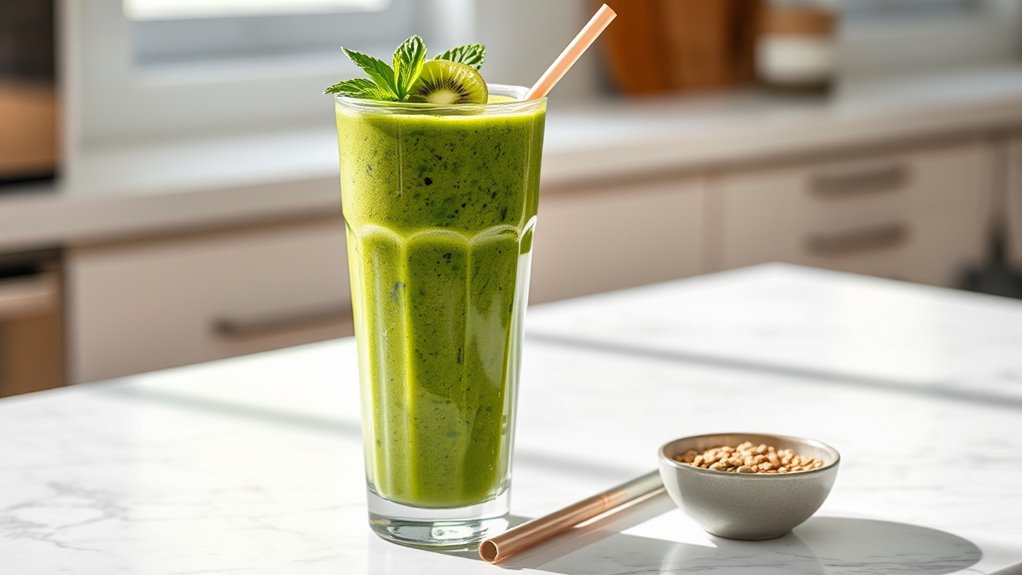
Although low-calorie smoothies are straightforward to make, paying attention to ingredient quality and balance can greatly enhance both taste and nutritional value. You can easily incorporate healthy swaps like Greek yogurt instead of cream or coconut water instead of fruit juice to reduce calories without sacrificing creaminess or hydration. Flavor boosters such as fresh herbs, a splash of vanilla extract, or a pinch of cinnamon add depth without adding sugar or fat. When blending, start with your liquid base and add frozen fruits gradually to avoid overly thick textures. Keep portion sizes in check by measuring ingredients, as calorie counts can add up quickly. By experimenting with these tips, you maintain freedom to create delicious, nutrient-dense smoothies that support your goals while satisfying your taste buds.
Food Value and Benefit
Low-calorie smoothies are nutrient-dense beverages made from a blend of fruits, vegetables, and protein sources. They provide essential vitamins such as vitamin C, vitamin A, and B-complex vitamins, along with minerals like potassium, magnesium, and calcium. These smoothies are low in calories but rich in antioxidants, fiber, and protein, making them an excellent choice for a balanced diet.
Benefits of eating this recipe include:
- Supports weight management by providing essential nutrients without excess calories
- Boosts energy levels through natural sugars and dietary fiber
- Promotes healthy digestion with probiotics and fiber-rich ingredients
- Enhances skin health due to antioxidants and vitamins like vitamin C and vitamin A
- Aids in muscle maintenance and repair with added protein from sources like Greek yogurt or protein powders
- Helps maintain electrolyte balance with minerals such as potassium and magnesium
